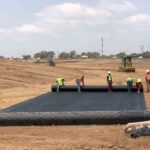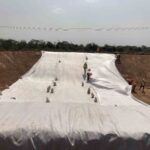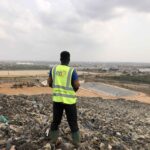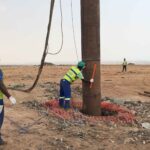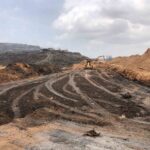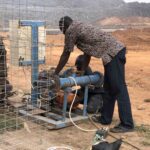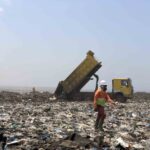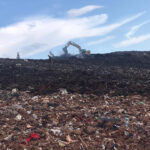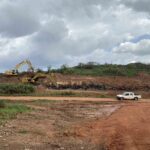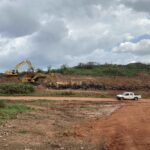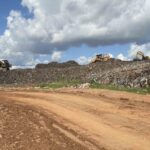Client
Ministry of Sanitation and Water Resources
Project
Decommissioning and Re-Engineering of Kpone Landfill Site
Project Duration
PROJECT DESCRIPTION
The Kpone landfill site is an engineered landfill is located about 2 km off the Accra-Aflao main road at the Kpone barrier at latitude 5.7041o N and longitude 0.0288o E. The site is located within the geographical boundaries of the Kpone Katamanso Municipal Area. The landfill is operated by the Waste Landfills Company Limited on behalf of the Tema Metropolitan Assembly.
The landfill was commissioned in 2013 under the IDA funded Second Urban Environmental Sanitation Project (UESP2).
The landfill was designed to occupy 38ha with a 25 years design life. The implementation for the landfill project was planned for two phases summarized as follows
Phase 1 – 18ha
- * void and airspace of about 1.5 million m3
- * 4 cells
- * 8 -10-year design life
Phase 2 – 20ha (up to 15 years operational life)
- 9 cells
- Land for phase 2 now site for Tile Factory
Though designed to originally serve Tema and Ashaiman it served as the primary final disposal site for the Greater Accra Metropolitan Area until its closure in 2019 following a major fire outbreak in the landfill.
Client
Ministry of Sanitation and Water Resources
Project
Decommissioning and Re-Engineering of Oti Landfill Site
Project Duration
PROJECT DESCRIPTION
The Oti Landfill is an engineered sanitary landfill facility at Oti near Dompoase on the outskirts of Kumasi. The landfill was commissioned in January 2004, under the Urban Environmental Sanitation Project (UESP I) financed by the World Bank. There are three landfill phases at the site.
The facility occupies 40 Ha of land.
The site reportedly receives 1200 – 1300 metric tonnes of waste per day; less than the reported 1500 metric tonnes generated daily.
It is projected that the Oti Sanitary Landfill Site has the total volume capacity available of 4.5 million m3 and will last until 2028.



